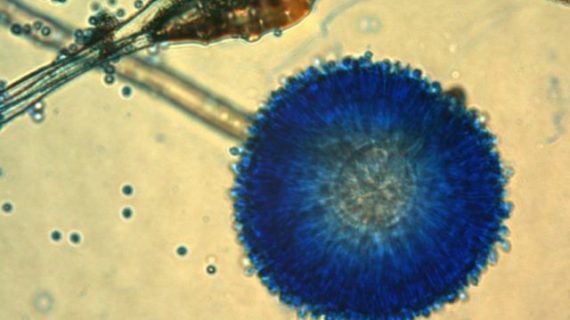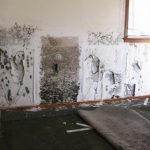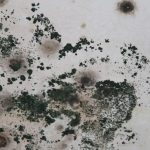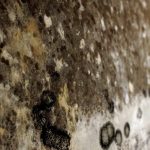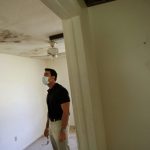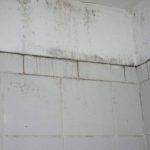Aspergillus is a very common type of mold to find, but it also has dangerous effects on people. It may affect healthy people, so it can bring more dangerous effects on those with a compromised health condition.
If you suspect the presence of Aspergillus mold at home, make sure to understand the facts and how to remove it completely.
What is Aspergillus Mold?
Aspergillus is a genus of fungi that you can find almost anywhere around the world, and it can grow in various climate.
There are hundreds of fungi species that belong to Aspergillus genus, although scientists have not finished researching all of their characteristics. Aspergillus mold has been known to grow in areas that have high sugar or salt concentration.
Various types of Aspergillus mold are beneficial for humans. They are used in the making of alcoholic beverage such as Japanese sake, creating citric acid, or even making medicines.
Several species are also developed to create enzymes, such as lactase and glucose oxidase. However, other species are deemed pathogens, are actually dangerous for human beings.
Where is Aspergillus Mold Found?
Aspergillus is known as “aerobic fungi”, which means that they grow in habitats with high oxygen amount. They also may grow on components with high glucose or starch amount.
This is why Aspergillus mold often appears on seeds, grains, bread, cheese, corn, potatoes, and various plants.
There are several Aspergillus mold species that can grow in “barren” habitat, such as the surfaces of bathroom tiles, plywood planks or beams, and brick walls.
Aspergillus niger is the most common Aspergillus mold species that you may find on various structures inside your house. Many Aspergillus mold species also grow on pillows and bed covers, so the health risks are quite high.
Aspergillus mold can grow on non-nutritious surfaces because of several supporting factors. Damp condition and lack of sunlight are among the major causes of Aspergillus mold infestation in the house.
It may appear as dark spots that look bigger and spread wider when the habitat supports its growth.
Aspergillus mold spores bring common health concerns like any other mold types. People with allergies or asthma can get their symptoms triggered by the flying spores.
Aspergillus Mold Health Effects
Coughing, sneezing, runny nose, rashes, and wheezing breath are common symptoms. Babies, children, and sick elderly can also experience severe allergic symptoms when exposed to mold spores.
Aspergillosis is a special term for several conditions that are specifically caused by Aspergillus mold. Since there are several varieties, it is hard to group this condition.
Aspergillosis usually attacks people with preexisting conditions, such as tuberculosis, pneumonia, asthma, sinusitis, and compromised the immune system. Aspergillus fumigatus is the most common species that causes this condition.
Early symptoms of Aspergillosis can be hard to detect, since you may confuse them with general ailments. However, they usually involve something such as:
- Fever and chills
- Wheezing breath and difficulty in breathing
- Chest pain
- Productive coughing, sometimes with blood
- Whole body infection
- Organ failures such as kidney or liver (if left untreated for a long time).
People with a compromised health condition can experience severe health conditions, and in some cases, death. If you have family members with such preexisting health conditions, make sure there is no Aspergillus mold present in the house.
Also, if you suspect Aspergillosis in yourself or your family member, you must visit a doctor for a thorough diagnosis.
Aspergillus Mold Removal
Not all dark spots in your house are caused by Aspergillus mold. The only way to determine a mold species is through lab testing.
You can request such testing from the nearest facility, but whatever the answer is, you will still need to remove mold if you want to get rid of health risks.
Environmental Protection Agency requires homeowners to contact professional if mold infestation spreads to more than 10 square feet of area. Also, you are not recommended to clean the mold yourself if you have specific health conditions that may get worse.
If you want to do your own Aspergillus mold removal, here are the steps:
- Remove all moldy and decaying materials from your house. They not only include moldy carpet or upholstery, but also spoiled foods, rotten fruits, decaying leaves, and moldy soil from potted plants or garden.
- Mix one part of bleach with three parts of water in a bucket. Wipe all the moldy surfaces that you see. Don’t forget to wear disposable gloves and mask, along with goggles.
- If the mold problem is quite severe, you can use a household fungicide. Use this product on mold-prone spots, such as on the bathroom or under the sink. Make sure to follow the directions, use all your safety equipment, and open the air circulation in the room before you clean.
- Throw away all the disposable things that you use to clean the mold. To prevent the return of the mold, you can keep all the moldy objects and used gloves or mask in double bags, before throwing them away.
Ask the plumber
- Fix all the plumbing problems and structural damages that cause leakage. If you suspect leakage behind the wall structures, ask your plumber to do the job. Moisture is one of the reasons why mold is growing in your house.
- Install dehumidifier if necessary. High humidity is an ideal condition for mold to grow. If your area has particularly high humidity, a dehumidifier is a good investment to prevent mold.
- Install air purifier. If someone in the house has an allergy, asthma, lung disease, or compromised immune system (such as suffering from AIDS or in the middle of chemotherapy), an air purifier can help reducing contact with mold spores and dust. However, you still need to let fresh air entering your house for about 1-2 hours or so.
- Check the fridge and make sure it works properly. Improper temperature setting or condition can cause your foods to spoil quickly. Also, if you want to store cooked foods inside the fridge, make sure it is not hot before you put it in.
Aspergillus mold can bring serious health risks, especially on people with compromised conditions. Keeping your house well-ventilated, clean, and leak-free is the key to prevent Aspergillus mold from growing.
